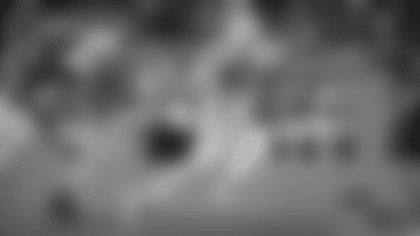GREEN BAY – For all the consternation about the Packers' strong 2-0 start morphing into an unsatisfying 2-1-1 record at the bye, there's one element to Green Bay's game through the first four contests that has the makings of a valuable foundation on both sides of the ball:
Success on third down.
It's called the money down for a reason, and if the Packers keep cashing in on it, things will continue looking up.
Green Bay currently has the No. 1-ranked offense on third down, and the No. 4-ranked defense, the only team in the league in the top five in both categories.
In fact, the Packers' 53.7% offensive conversion rate on third down is seven percentage points higher than the second-place team. It's still early and that'll be a difficult number to maintain through the rest of the regular season, but it's the best third-down rate since the 2011 Saints converted 56.7% of the time.
"It starts up front with the pass pro," QB Jordan Love said of the third-down success. "That's when, obviously, third-and-longer situations, teams try to pressure a little bit more … and then guys just executing, winning. A lot of man coverage on third downs, and guys are going out there and winning their one-on-ones, making plays."
Offensive coordinator Adam Stenavich also credited Love's scrambling and ability to extend plays as a factor on third downs, while tight end Tucker Kraft added that the running backs have done their job in protection as well and reiterated Green Bay's propensity to beat man coverage.
"This is a squad that's locked in, hungry to fight through contact every single week and make plays down the field," Kraft said. "That's what it comes down to, and J-Love just being on the spot."
Defensively, opponents are converting just 32.7% on third down. Even as Dallas put up 40 points in Week 4 in Green Bay's only shaky defensive performance to date, the Packers still stopped 7-of-11 third downs (the Cowboys converted once on fourth down), none bigger than in goal-to-go in overtime.
Numbers like that will go a long way over the course of a long year even if it didn't necessarily translate in Dallas.
"It's a credit to our players. It's the rush plus the coverage," defensive coordinator Jeff Hafley said. "We've been getting pressure on the quarterback, we've been aggressive in coverage … we've simulated (pressures), we've disguised and played zones. We've thrown a lot at people."
They could start to vary their third-down calls even more now that Micah Parsons has some games under his belt and the defensive coaches have had time to learn how best to use him.
Parsons this week referenced meeting with the defensive coaches and wanting to "expand on" what he's done so far – he's second on the team with 2½ sacks while leading in QB pressures. He suggested a potential "new look" to his defensive role.
All this bodes well for Sunday's home matchup with the Bengals, who rank 25th in third-down offense (36.1%) and 29th on defense (46.0%). Whether the switch at quarterback to Joe Flacco or the potential return from injury of first-round pass rusher Shemar Stewart can alter those numbers remains to be seen.
But getting back to the Packers, it hasn't been all sunshine and roses on third down despite the team's lofty rankings. Love's one interception this season came on a crucial third down in Cleveland and proved very costly. The defense also allowed a couple of way-too-easy completions on third down in Dallas with chances to get off the field.
So there's always room to improve, but if the Packers can keep this up, it should bode well.
Former defensive coordinator Dom Capers used to tout one statistic in particular as having a strong correlation to winning. He called it passer rating differential – the difference between the passer rating of your QB vs. the opponent's at the end of the game.
Applying a somewhat similar lens to third-down stats, the Packers have a differential of 21 percentage points between their offense's conversion rate (53.7) and their defense's (32.7). That's by far the best in the league.
So much so that only two other teams have a double-digit differential in percentage points – Chicago (16.2) and San Francisco (12.4).
That's not easy to reach, and will be even harder to keep up. But if it truly becomes a hallmark of this Packers team, it can, and should, translate to a whole lot more wins.














